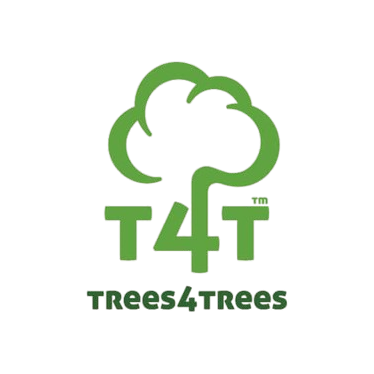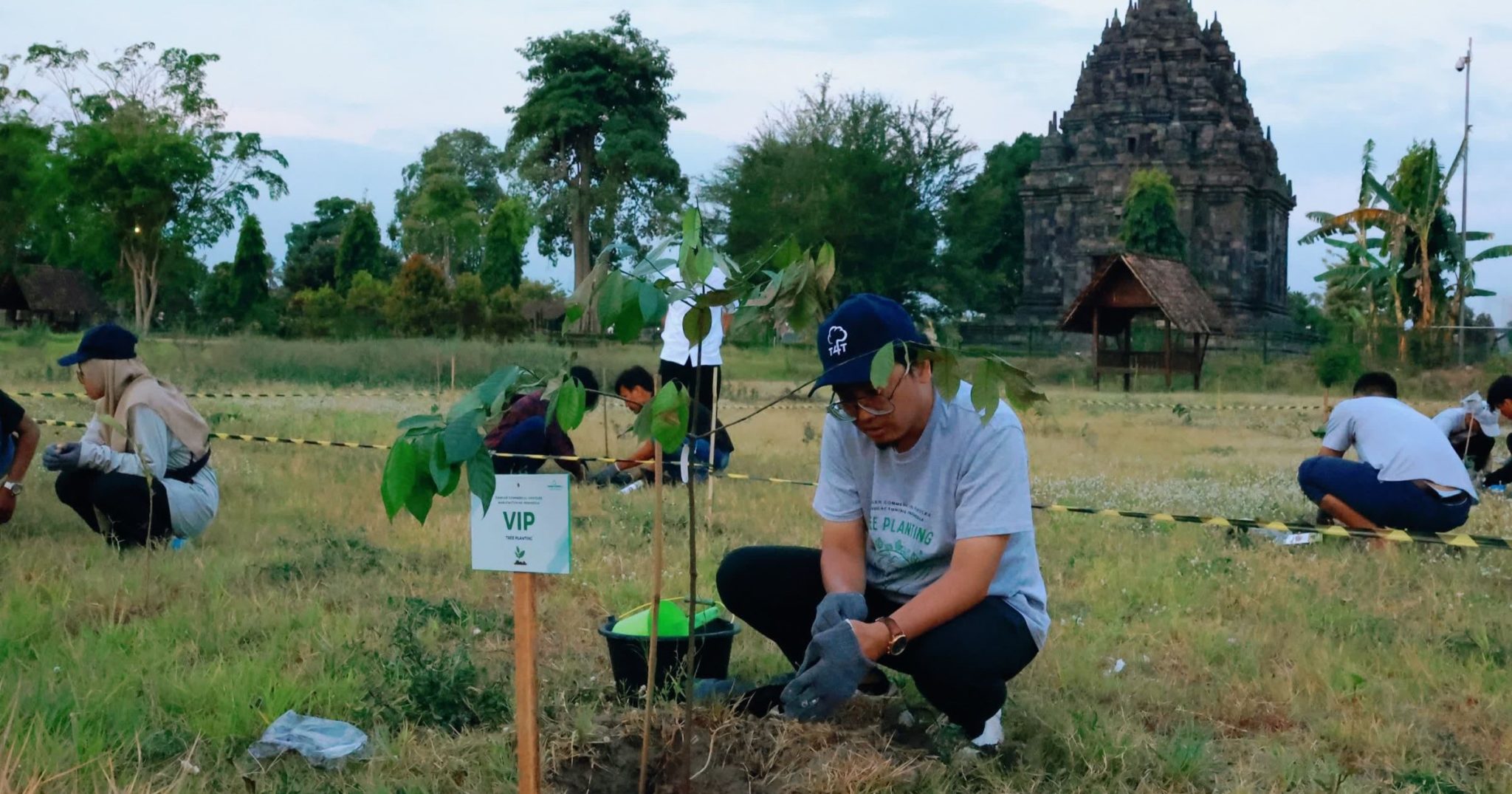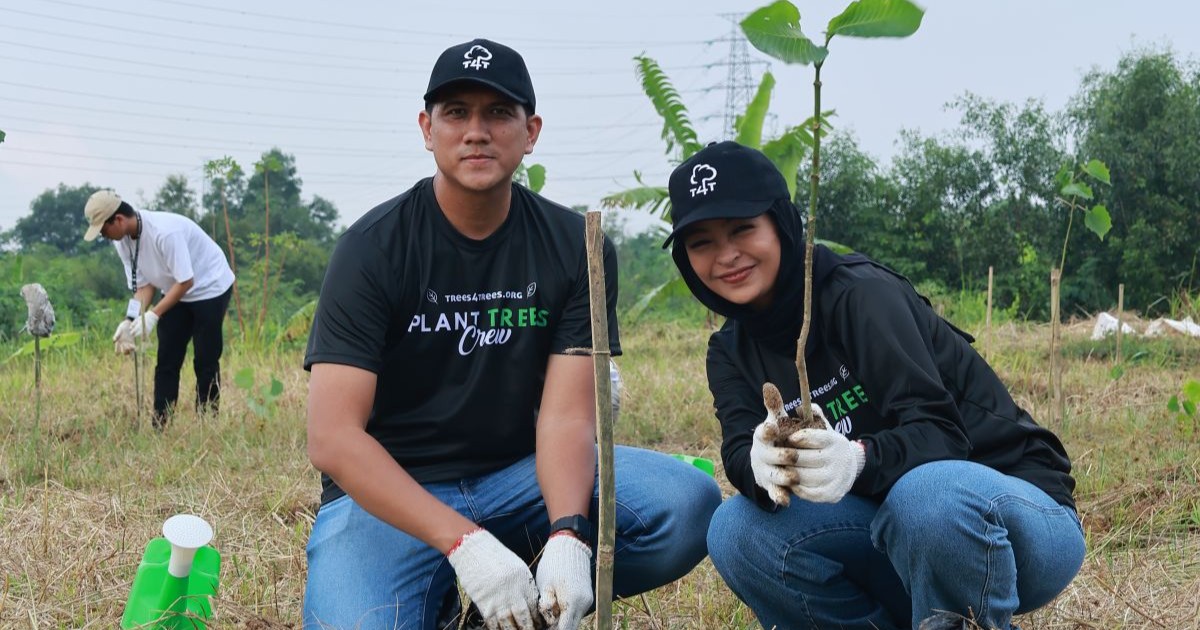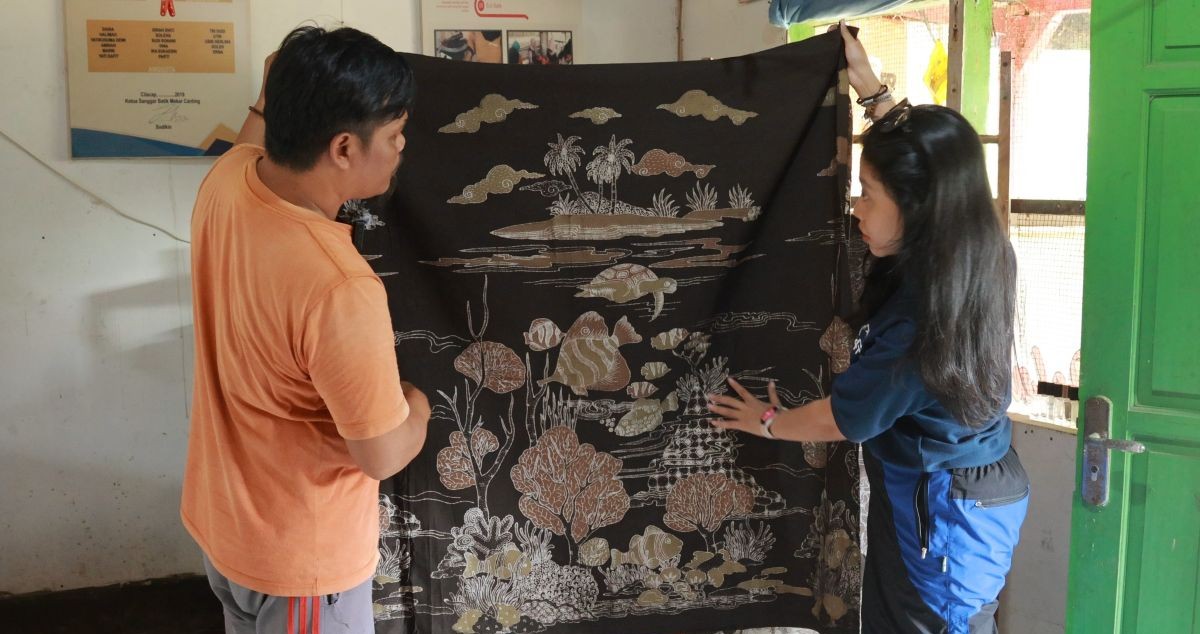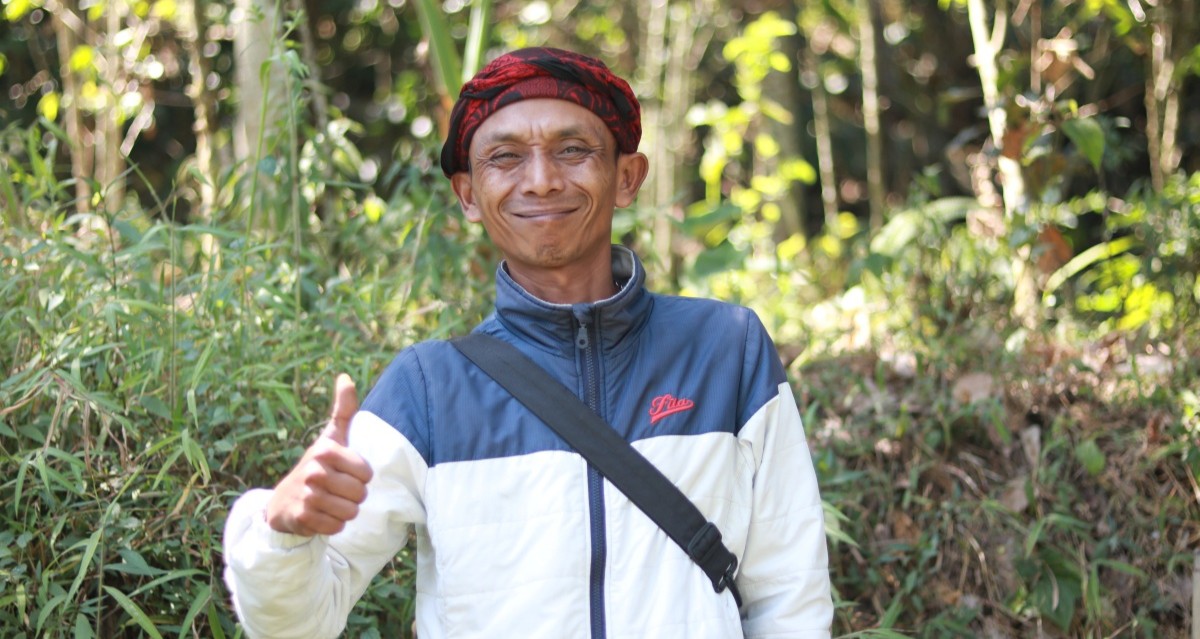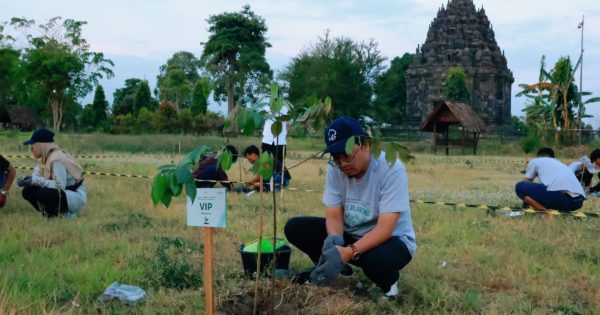
Centuries ago, kepel and sawo kecik trees were highly prized by the royal Mataram court of Central Java. Kepel fruits were the perfume of princesses at Yogyakarta Palace, while sawo kecik became a symbol of kindness that was recognized throughout the realm. Today, kindness returns to the soil of Central Java, with a planting activity born out of reverence for the region’s heritage.
Sojiwan Temple (Candi Sojiwan) is a relic from this era. Located in Kebon Dalem Kidul Village, just over a mile from the more famous Prambanan temple, this ancient monument remains an important site for local communities.
Every day, many people come to visit. With hardly any shade, this temple and its pilgrims are blasted by the midday sun. To provide some respite, Trees4Trees has been busy restoring the area to its former glory.
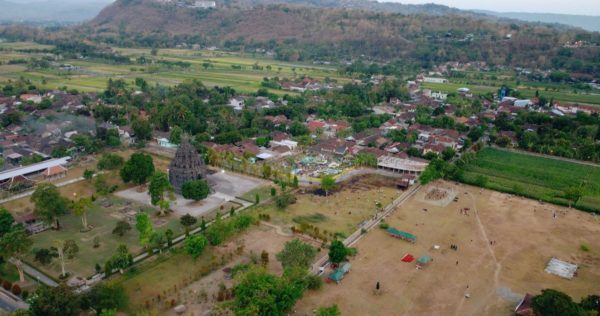
New trees provide shelter and shade
In early September 2023, Trees4Trees teamed up with 250 volunteers from PT Daimler Commercial Vehicles Indonesia (DCVMI) to plant trees around Sojiwan. The event was a golden opportunity to raise awareness and develop skills.
“Before planting, we provided an educational session to teach proper tree planting techniques,” explains Erni Setyaningrum, Trees4Trees Office Manager. “In total, we successfully planted 300 trees with DCVMI and helped to increase tree cover.”
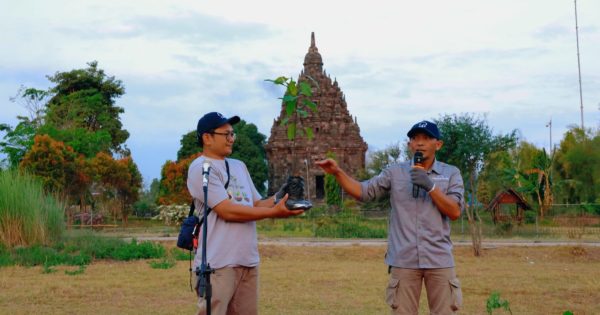
Rizki Pradhitya, Trees4Trees Kebumen Unit Manager overseeing the event, added:, “We planted 55 trembesi (rain trees) to provide shade and cool down the area, addressing the lack of trees as shade. Additionally, we planted Gayam trees to conserve water sources and prevent drought, aligning with the local community’s ecological needs.”
Fun facts about trembesi trees
- Also known as the ‘rain tree’ or ‘monkey pod tree’
- They can absorb up to 10 times as much CO2 as other species.
- Their leaves fold up in the rain, allowing more water to reach the ground.
- Their roots suck up large amounts of ground water, which helps prevent flooding and soil erosion during the wet season.
- In 2010, Indonesia planted more than 1 billion trembesi trees as part of a nationwide conservation program.
Reconnecting with royal roots
In addition to trembesi and other shady species, various trees were planted that hold cultural significance for the area. As Rizki explains, “we planted three species closely tied to Yogyakarta’s cultural heritage and indigenous to the region: duku, kepel, and sawo kecik trees.”
Duku in particular is beloved by the local community and has a special place in Yogyakarta society, due to its popularity as a local fruit.
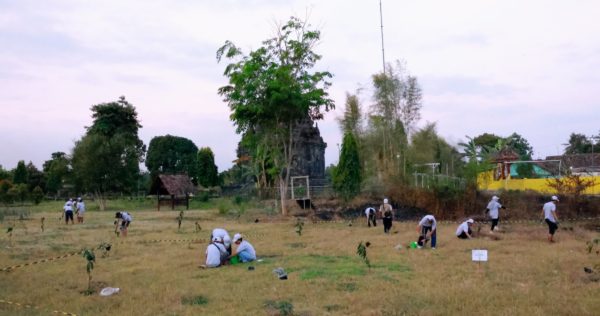
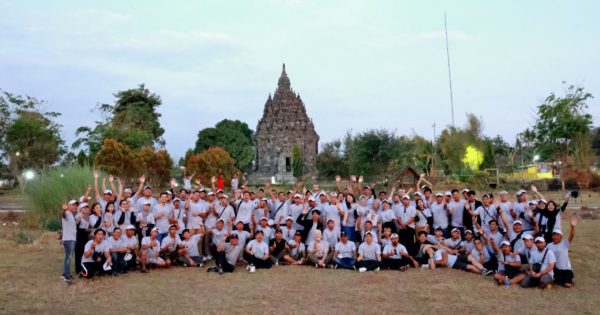
Growth and transformation: Paying tribute to Buddhist heritage
Another tree chosen for the event was the Bodhi, also known as ‘the tree of awakening.’ This variety was chosen for its religious significance and close association with Sojiwan as a Buddhist temple.
“There were already a few Bodhi trees in the temple area,” said Rizki. “We’ve added 55 new Bodhi trees (because they are) considered sacred by local communities and have a strong connection to Buddhist history,” he added.
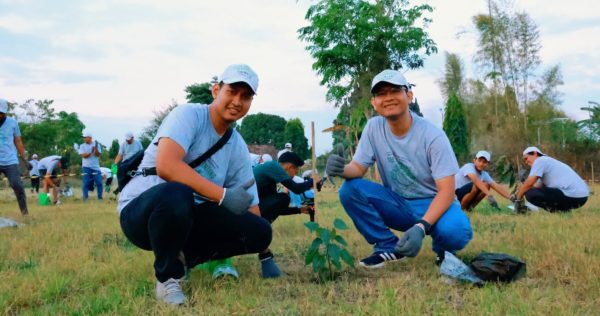
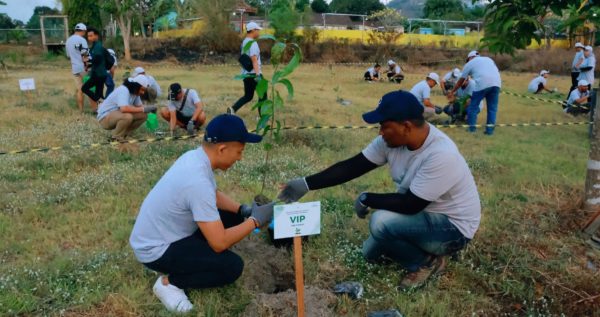
Next steps: Branching out to Gunung Kidul, Yogyakarta
Following the success of Daimler Indonesia’s tree-planting project, an additional 4,700 trees will soon be planted in various villages around Semanu District, Gunung Kidul, Yogyakarta. With support from Daimler Indonesia, Trees4Trees, will continue working to heal the land and promotes water conservation.
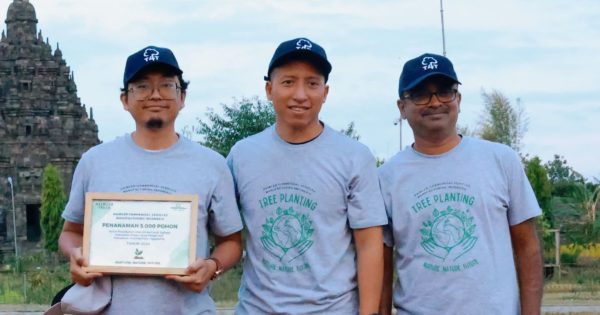
“Drought and water scarcity are common problems in Gunung Kidul, especially during the dry season,” explains Haryadi, Trees4Trees GIS Officer. “This area also has a significant amount of degraded land. That’s why, we will plant trees – to help improve the environment.”
Rizki added that many local farmers have already requested new tree species for the area. They requested a mix of teak, Albizia, burflower, guava, mango, kelengkeng, and rambutan to enhance the environment. According to Rizki, “these tree species contribute to improving the livelihoods of local residents, due to their economic value through the production of fruits, leaves, and other tree products.”
From economic value to environmental impact and from shade to religious tribute, these new trees will provide a wide range of services to the area surrounding Sojiwan Temple. Together, Trees4Trees and Daimler Indonesia are paying tribute to the past, while also building for a greener, more sustainable future.
Writer: V. Arnila Wulandani. Editor: Christopher Alexander
